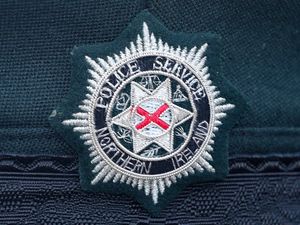Watchdog announces fresh investigation into fatal shooting by police
Lewis Skelton, 31, was carrying an axe through Hull city centre when he was tasered four times and shot twice in the back by police in 2016.

The family of a 31-year-old man who was shot dead by police as he carried an axe through a city centre have welcomed an announcement that the police watchdog will reopen the case.
Lewis Skelton was tasered four times and shot twice in the back by police on November 29 2016 and later died in hospital.
The former police watchdog, the Independent Police Complaints Commission (IPCC), investigated the shooting but took no further action against the Humberside Police officer who fired the fatal shots, known only as B50, finding that he had acted in the genuine belief the use of force was necessary to protect lives.
After an inquest in 2021 found that Mr Skelton was unlawfully killed, the IPCC’s successor, the Independent Office for Police Conduct (IOPC), decided not to reinvestigate the case.
But Mr Skelton’s father, Glenn Skelton, challenged this finding at the High Court and a judge ruled in April that it should be quashed and a new decision be made.
On Wednesday, the IOPC announced that it is reopening its investigation with a dedicated team with no connection to the original IPCC investigation.
Solicitor Neil Hudgell, who represents Mr Skelton’s family, said: “Lewis’s family welcome the decision of the IOPC to reinvestigate the death of their much-loved father, son, brother and uncle.
“However, the family do not welcome the years-long legal wrangles which have led to this decision, or the begrudging way in which the IOPC have delivered this news.
“It is now nearly eight years since Lewis was shot dead by a firearms officer and the IOPC’s predecessor – the IPCC – decided that no officer should face criminal investigation or disciplinary proceedings.
“What is not apparent from the IOPC’s public announcement of the reinvestigation is that Lewis was a man with a history of poor mental health who officers were told had not threatened any member of the public, but who was shot in the back twice whilst walking away from officers after he had been tasered four times by them.”

He added: “Even in the face of that conclusion by the jury after such a long and rigorous inquest – and a decision by the Divisional Court that there was evidence to support that conclusion – the IOPC refused to reopen their investigation until the High Court found that they had not properly applied their own policy.
“The IOPC must now do the right thing by Lewis Skelton and his family. There must be a full, fair, fearless and objective reinvestigation of the events which led to Lewis’s death in 2016.”
He said: “Our clients’ confidence in this process has been shattered by their experience. The apparent reluctance by the IOPC to reopen an admittedly flawed investigation in the circumstances of this case is deeply damaging to public confidence.”
IOPC regional director Emily Barry said: “Our thoughts remain with Mr Skelton’s family and loved ones as well as all those whose lives have been affected by his death.
“While we are disappointed with the High Court ruling, which used a different interpretation of our reinvestigation policy than we did, we respect the judge’s findings.
“Having carefully considered their comments, we believe there is now a requirement for the IOPC to reopen the investigation into the shooting of Mr Skelton.”
Ms Barry said: “We are extremely conscious of the impact this decision will have on all those involved. While the length of inquest and legal proceedings are beyond our control, we know that it benefits nobody to have key questions unanswered so long after Mr Skelton’s death.
“We also appreciate that this decision will be concerning for many of the armed officers who put their own safety at risk to protect the public.”
She said the IOPC is also reviewing its reinvestigation policy in light of the judge’s comments “to ensure it more accurately reflects the original intent behind it”.
Mr Skelton, who had struggled with mental health problems, was reported to police through four 999 calls on the day of the shooting after being seen walking with an axe.
After he was found by armed police, B50 and another officer – known only as Charlie – fired Tasers but this had no effect.
B50 then shot him twice in the back from close range with a pistol, with an IPCC investigation finding that “it was his honestly held belief that Mr Skelton posed a threat” to members of the public.
After the inquest concluded, the IOPC found two flaws in the IPCC’s initial review of the incident, relating to B50’s perception of Mr Skelton’s speed and his allegation that he was behaving in a threatening way.
But it deemed a new investigation was unnecessary as the flaws had no “material impact” on the original outcome, there was no new information that could have led to a different decision, and it was not in the public interest to re-order an investigation.
Humberside Police said it will co-operate fully with the investigative process but said it would not be appropriate to comment further at this time.
A spokesman said: “Our thoughts and condolences remain with Lewis’s family and friends, as well as the officers involved in this very sad and tragic event.”





